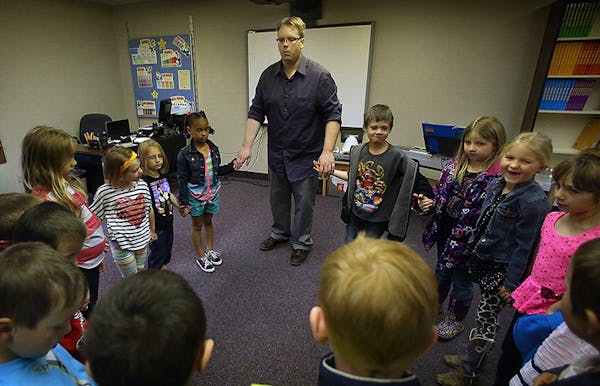At the end of a feverish fifth year, it's easy to paint North Dakota's oil portrait by numbers: Production is inching toward a million barrels a day, up seven times what it was in 2008.
Thousands of workers have poured in to staff 200 rigs, drilling 2 miles deep to tap a projected 7 billion barrels buried in the shale. The state has vaulted ahead of Alaska, trailing only Texas and the Gulf of Mexico in oil extraction. Its once-shrinking population is now growing faster than any other state and its coffers are laced with a $1.6 billion surplus.
Behind all those gaudy numbers, you'll find countless dreamers and schemers, truck drivers and schoolteachers, frackers and land agents spread across the vast prairie. We'd like to introduce a few more as we wind up our series exploring the state's transformation as a player in the world's energy race.
'Everyone kind of caters to you'
It's Saturday night at Cattails bar on Main Street. A fracker from Utah sings "Free Bird," karaoke-style. Oil-field workers clink shot glasses. And concrete mixer driver Michelle Bean strokes her cue at the pool table, starting another game of 8-ball with her housemate, dump truck driver Sonya Adams.
Nothing goes in.
"That shot was like a woman," she says. "All bust, no balls." Bean, 41, sips Crown Royal and Red Bull to stay alert after working nearly 90 hours this week, pouring concrete for roads, sidewalks and oil pads. Sunday is her day off. She came out to the Bakken in February, fleeing a bad breakup in the woodsy country near Leavenworth, Wash.
"I miss the trees," she says. "And the guys to girls ratio is a little unbalanced."
Being female in the North Dakota oil fields, Bean and Adams say, isn't as bad as the horror stories they hear about leers at the Wal-Mart and harassment around every corner. Unofficial counts say there are 10 men for every woman working in western North Dakota.
"It's not too bad because everyone kind of caters to you," Bean says. "Nobody's messed with me and it's all been respectful."
Knife River Corp., a 5,000-employee construction giant based in Bismarck, provides the women with a five-bedroom house they share with another truck driving woman named Betty. They earn $24 an hour plus a $50 per diem and Knife River deducts $600 a month for the housing. Adams, 40, left a divorce and 9-year-old son back in southern Idaho.
Her parents, Richard and Tina Yelton, have come up from Arizona. Her dad is her truck boss and her mom drives a 10-wheel end dump truck just like she does.
"Women are definitely outnumbered," she says, but even that has improved from when she arrived two years ago. "They're learning we work just as hard and do just as a good a job."
'What we do is investigate, negotiate and argue'
The back seat of Vern Stiller's silver Mercedes SR5 SUV is littered with maps, a hard hat, work gloves and an extra carton of Pall Mall cigarettes.
There are 180,000 miles on the odometer, with 80,000 more piling up yearly. He's driven 330 miles today and it's still early afternoon.
"That's a lot of ass time," said Stiller, 70. "I drive around, smoke cigarettes, drink coffee, talk smart and write checks."
His voice is pure gravel, his neck tan and weathered. You can't tell he's got an artificial leg under his bluejeans, a remnant of a busted ankle and frostbite from five decades working on oil fields in Texas, Oklahoma, Wyoming and now North Dakota.
"They call us land men," he said. "What we do is investigate, negotiate and argue."
As middle man between the oil companies and ranchers in western North Dakota, Stiller searches courthouses for titles and figures out who owns the mineral rights. Then he greases the deal, acquiring rights of way easements for pipelines to move the oil and natural gas from this remote landscape to a world thirsting for fuel.
"I do love making deals," said Stiller.
He's been married four times, lives in Billings, Mont., but spends most of his time in a friend's Airstream trailer at the Tobacco Garden campground 20 miles northwest of here.
"I've retired three times but needed something to do," he said. "I make more money than a medical doctor or an engineer, which is hard to imagine."
As he steers his Mercedes through the canyon country known as the Little Missouri Breaks, he spots a prominent landowner — Bill Jorgenson of the Bar U Ranch. They talk on the road about 15 miles of potential pipeline that one of Stiller's clients would like to put on Jorgenson's property.
"Anyway you can work it out," Stiller says in parting, lighting another Pall Mall and driving off past another well pad tucked in a hillside.

Lacrosse 2024: Boys or girls, discussion begins in the same place

Will 'shotgun only' zone for deer in southern Minnesota be abolished?
One killed in head-on crash in Coon Rapids

Edina could see first zoning update in 50 years

